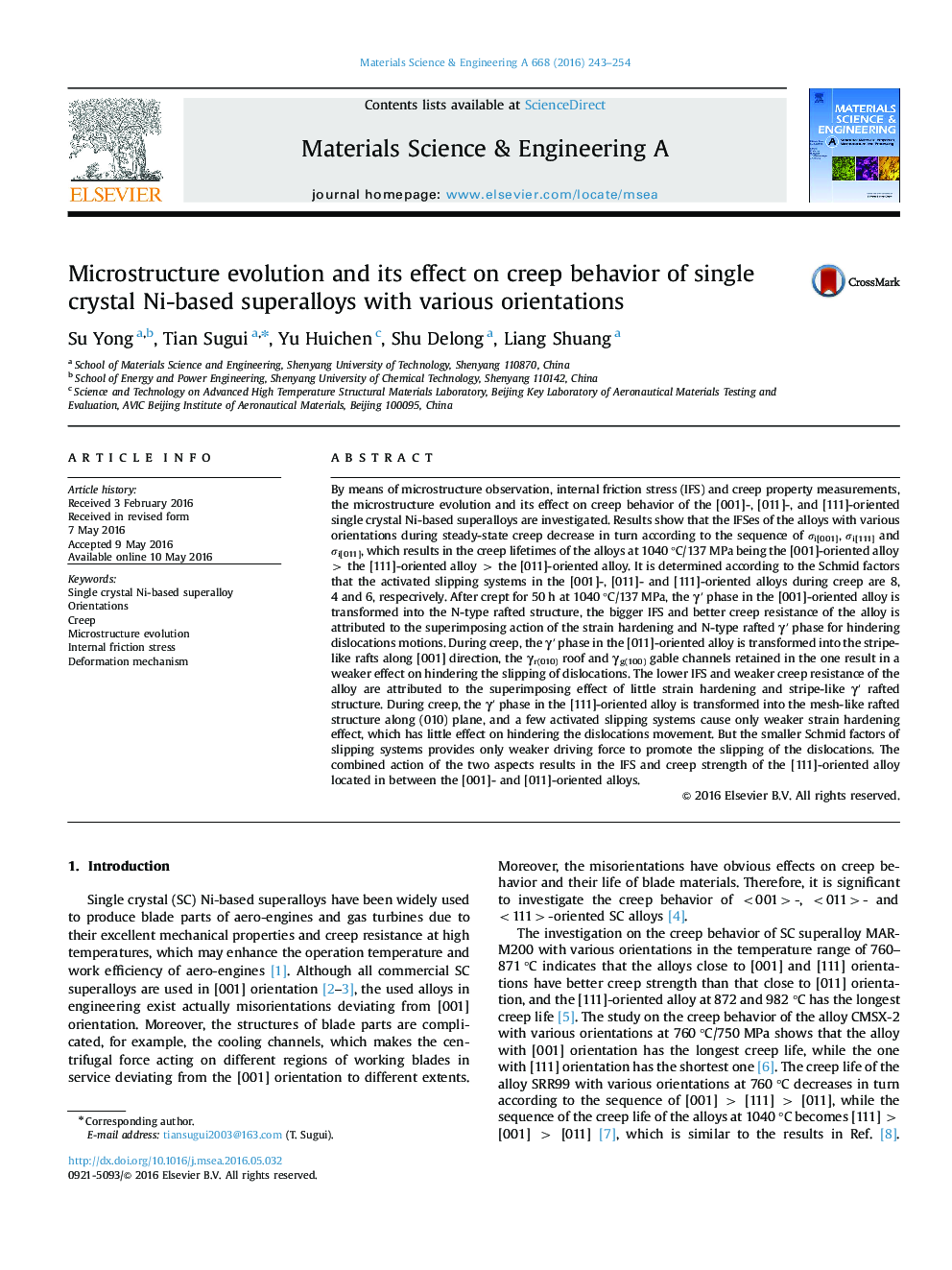| Article ID | Journal | Published Year | Pages | File Type |
|---|---|---|---|---|
| 7975366 | Materials Science and Engineering: A | 2016 | 12 Pages |
Abstract
By means of microstructure observation, internal friction stress (IFS) and creep property measurements, the microstructure evolution and its effect on creep behavior of the [001]-, [011]-, and [111]-oriented single crystal Ni-based superalloys are investigated. Results show that the IFSes of the alloys with various orientations during steady-state creep decrease in turn according to the sequence of Ïi[001], Ïi[111] and Ïi[011], which results in the creep lifetimes of the alloys at 1040 °C/137 MPa being the [001]-oriented alloy > the [111]-oriented alloy > the [011]-oriented alloy. It is determined according to the Schmid factors that the activated slipping systems in the [001]-, [011]- and [111]-oriented alloys during creep are 8, 4 and 6, respecrively. After crept for 50 h at 1040 °C/137 MPa, the γⲠphase in the [001]-oriented alloy is transformed into the N-type rafted structure, the bigger IFS and better creep resistance of the alloy is attributed to the superimposing action of the strain hardening and N-type rafted γⲠphase for hindering dislocations motions. During creep, the γⲠphase in the [011]-oriented alloy is transformed into the stripe-like rafts along [001] direction, the γr(010) roof and γg(100) gable channels retained in the one result in a weaker effect on hindering the slipping of dislocations. The lower IFS and weaker creep resistance of the alloy are attributed to the superimposing effect of little strain hardening and stripe-like γⲠrafted structure. During creep, the γⲠphase in the [111]-oriented alloy is transformed into the mesh-like rafted structure along (010) plane, and a few activated slipping systems cause only weaker strain hardening effect, which has little effect on hindering the dislocations movement. But the smaller Schmid factors of slipping systems provides only weaker driving force to promote the slipping of the dislocations. The combined action of the two aspects results in the IFS and creep strength of the [111]-oriented alloy located in between the [001]- and [011]-oriented alloys.
Related Topics
Physical Sciences and Engineering
Materials Science
Materials Science (General)
Authors
Su Yong, Tian Sugui, Yu Huichen, Shu Delong, Liang Shuang,
